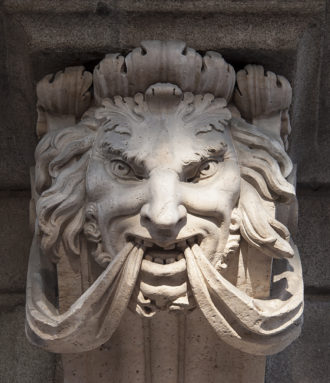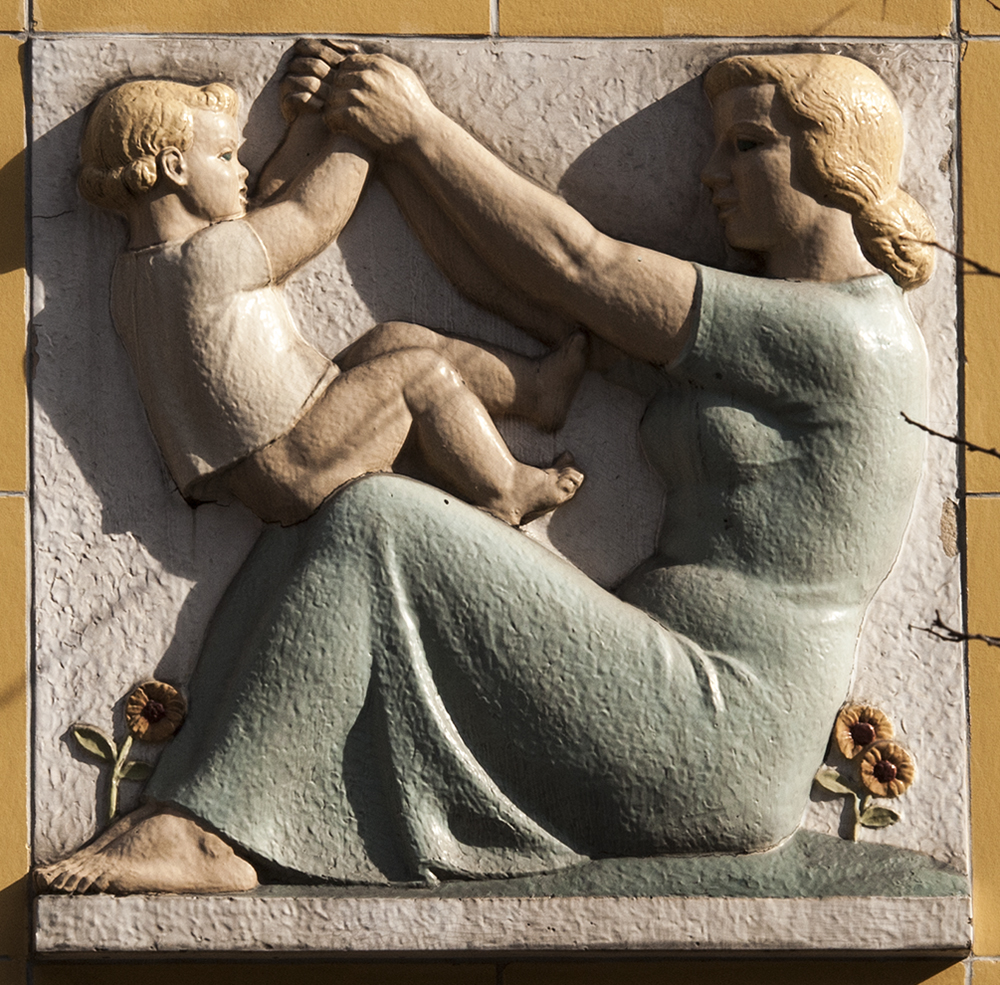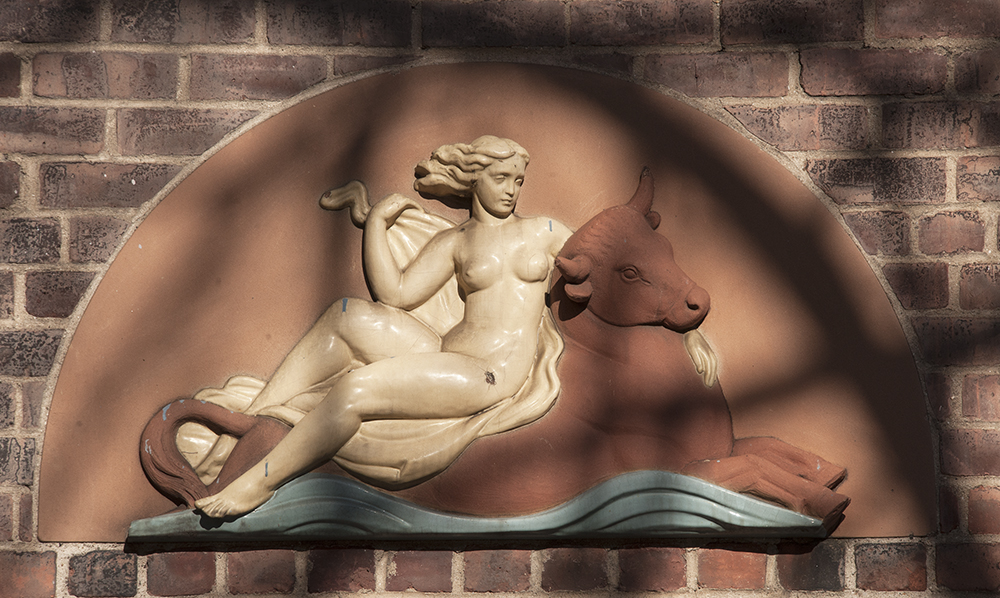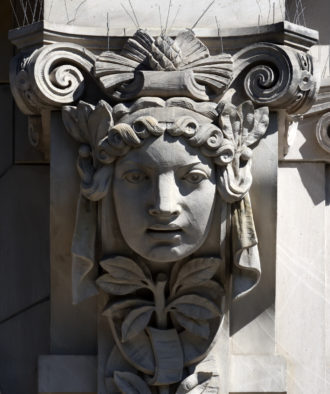
Over the years, and through my association with the film community, I’ve been invited to a variety of interesting events. Some are more compelling than others, but all intend to capture the spirit of filming in NYC. Most are designed to attract the attention of filmmakers, while emphasizing the benefits of filming in one of the world’s most cinematic cities. What is seldom mentioned in these presentations is the attention to the details carved into many of NYC’s building facades. There are a handful of architectural historians who have made a career out of researching and cataloguing these intricate details, as well as interpreting their meaningful associations.
It’s often difficult juggling invitations and deciding which are the most interesting and which to accept. It’s a kind of social crapshoot. Although I’m becoming quite adept at selecting those that do sound interesting, and then turn out to be fascinating. One of the events that I’ve recently attended was the opening of the NY Preservation Film Festival given at the international architectural offices of Beyer Blinder Belle. The film that opened the festival was written by Vivian Ducat, highlighting the work of Robert Arthur King. Stonefaced, an architectural anthology, is the story of these often-overlooked carvings. After viewing it, I realized the enormous body of work that covers not only Manhattan but all of the boroughs, and of course includes many of Europe’s most intricately detailed buildings.
Robert Arthur King’s story has evolved through a circuitous stream of life’s opportunities, as well as risks. Receiving his automotive degree from Brooklyn’s Academy of Aeronautics in the late 1960’s led to a subsequent interest in Engineering. From humble beginnings as an automotive mechanic, he turned to engineering, a decision that opened an impressive selection of doors that eventually enabled him to work on Apollo II, at IBM in Fishkill NY, and ultimately to teach architecture and drafting. It was during his studies that he was encouraged by a doting aunt to be the best in whatever field he pursued, resulting in the bold decision to apply to Columbia University. He was accepted into their 4 year architectural program, which he completed in 3.

Upon completion of his studies at Columbia, he was once again at a crossroad, and decided to continue his exploration in Europe. In Copenhagen, Oslo and London he found the architecture most aligned with the buildings he was familiar with in New York. In order to immerse himself in the history of these buildings, he dedicated his studies to concentrating solely on one month covering “brick” and one month covering “tile,” until he felt confident with an in depth understanding. During this time he developed a strong appreciation for the character, the style, and the proportion associated with older buildings. Working on developing this specialty led him to London Terrace in London, where he became an expert in building codes.
I was interested in learning more about his personal imprint over the years.
He explained that photographing the facades of details on “non-noteworthy” buildings enhanced his interest in landmarking “details” not just buildings. He compares Northern European architecture in cities such as London and Amsterdam to those in Manhattan which differ dramatically from cities like Barcelona, Madrid and Lisbon, where even the carved faces have a noticeably distinct look.

What, if any, are the most significant contributions that make European architecture so memorable?
His feelings confirm my beliefs in an intrinsic respect for history, culture, architecture, and even the manner in which elders are treated, in most of Europe’s cities. There is not nearly as much destruction of historic buildings there as there is in NY where they frequently replace these magnificent structures with glass and steel. The respect for history remains a prevalent theme.

I was also interested to hear Robert’s thoughts on his ongoing explorations.
His most ardent interest currently lies in the devastating effects of what has happened in Parkchester, NY. Parkchester is located in Central Bronx, with borders on East Tremont Avenue to the north, Castle Hill Road to the west, and Westchester Avenue to the south. The Bronx River Parkway and the Cross Bronx Expressway are its main thoroughfares. The housing development has the same origins as Stuyvesant Town. Parkchester is composed of 171 four-sided brick buildings, designed with aesthetics in mind, as evidenced by the intricate patterns of brickwork. The development contains 500 terra cotta statuettes and 600 plaques such as bullfighters, animal figurines, mermaids and Native American chiefs. They adorn the entrances and can be seen high on the corners of the taller buildings. Some of these details have been photographed by RAK, in an effort to bring attention to the city’s many “unnamed” buildings. Sadly, the population of uninsured residents was estimated to be 16% higher than the citywide rate. But the most devastating statistic lies in the concentration of fine particulate matter. The deadliest type of air pollutant, which is found in Parkchester, is more than the city average.
The lack of notice paid to the many artisans who contributed to the city’s history, has become an injustice that Robert hopes to correct. After meeting and speaking with him, and viewing the documentary Stonefaced, I have a hunch that here lies his next project.












